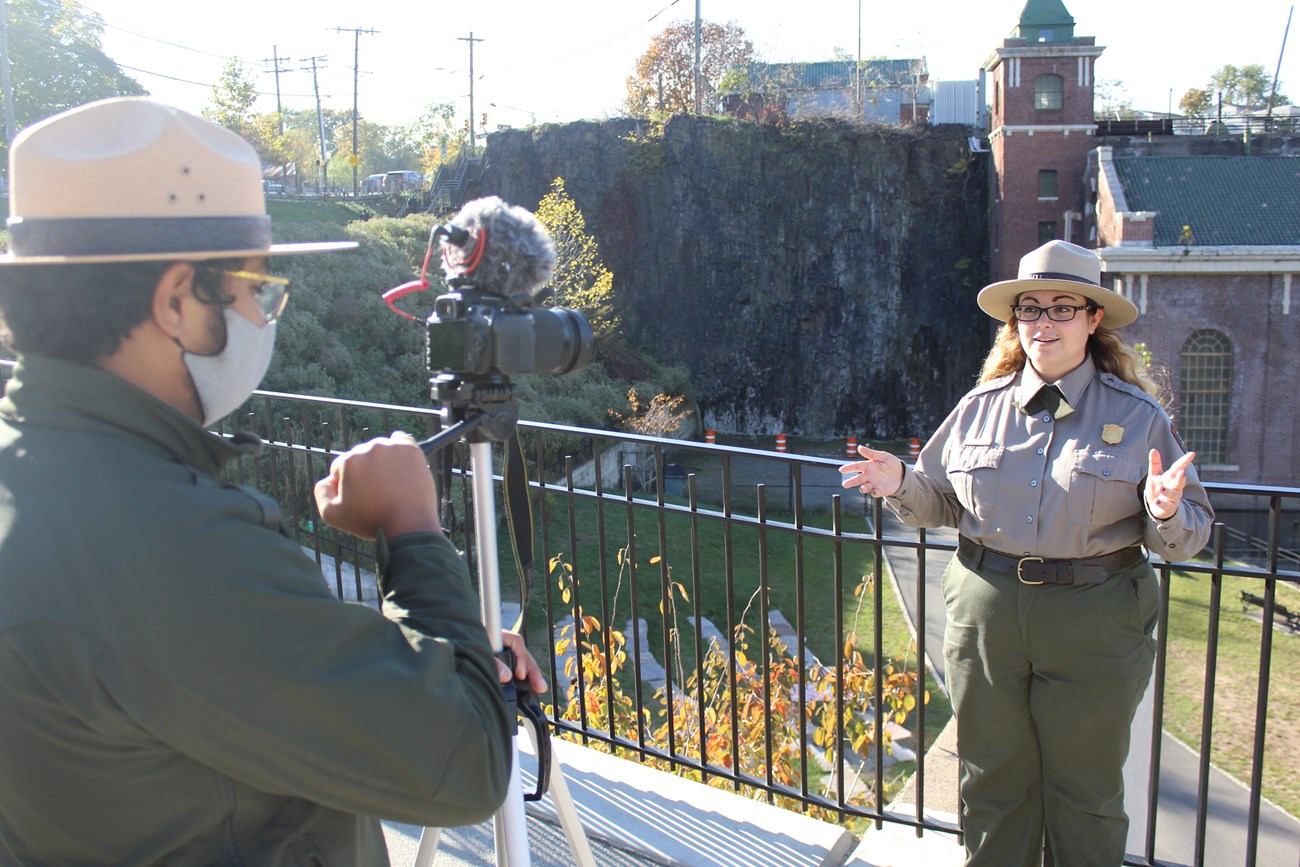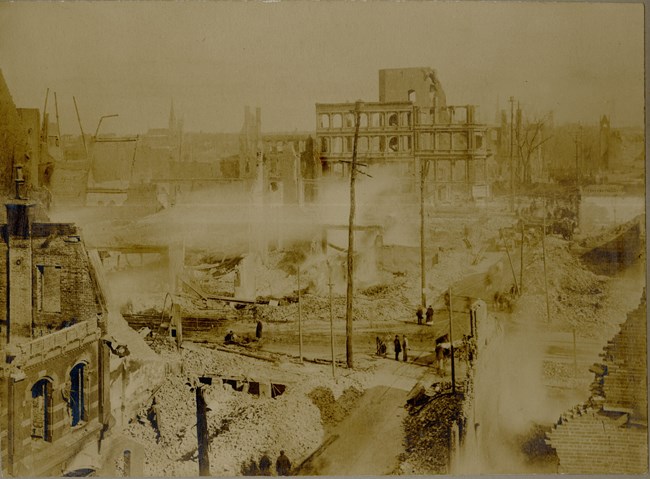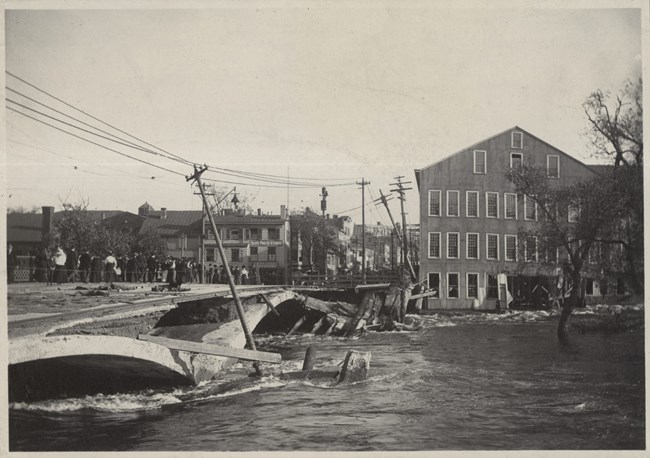
NPS Virtual Ranger TalksListen to one of our Virtual Ranger Talks to explore additional stories about interesting individuals and events in Paterson's history:
Paterson Museum The Great Paterson Fire and Flood of 1902As the first planned industrial city in the nation, Paterson, New Jersey was a great place to find work and call it home. Even in its early days, the city was highly populated with a dense urban core of buildings. With around 105,000 residents in 1900, it was obvious the city was growing. The commercial section of the city was well operated with small businesses, the post office, county courthouse, and banks. The industrial area was packed with mills, manufacturing products such as textiles, locomotives, machinery, and hundreds of other products. From its establishment in 1792, Paterson had quickly grown to become an industrial hub of the nation. 
Paterson Museum Just as the smoke started to clear, the winter season brought ice storms and heavy rainfall. On Friday, February 28th, the Passaic River quickly rose from the massive runoff and ice from upstream. This caused the dam in Whippany to burst, releasing further floodwaters. Shortly after the dam broke the streets of Paterson were filled with water. However, this did not stop Patersonians. Building up from the bottom, they returned to the city’s roots, reinjecting life into the heart of one of the first sites in America's industrial revolution. Within a year, the city and its residents were back on their feet, despite another challenging flood in October of 1903. Paterson overcame two back to back devastating events and came out stronger - neither fire nor flood could take down the resilient, ambitious city of Paterson. Ranger Video Series - The Paterson Flood of 1902Corbett, Glenn P. The Great Paterson Fire of 1902: The Story of New Jersey's Biggest Blaze. 2nd ed., vol. 1 1, G.P. Corbett, 2002. 
Public Domain Sam Patch: The Jersey JumperDiscover the story of Sam Patch, the man known as the Jersey Jumper, the Daring Yankee, and the Yankee Leaper. Rising quickly to fame after jumping off the Great Falls, landing in the Passaic River below unharmed. In his short but stunning career, he challenged himself with ever-more daring leaps, including becoming the first person to jump off Niagara Falls without a barrel... and live. In this entry of the Ranger Video Series, learn more about wild and weird life of Sam Patch. Ranger Video Series - The Story of Sam Patch |
Last updated: January 12, 2024
